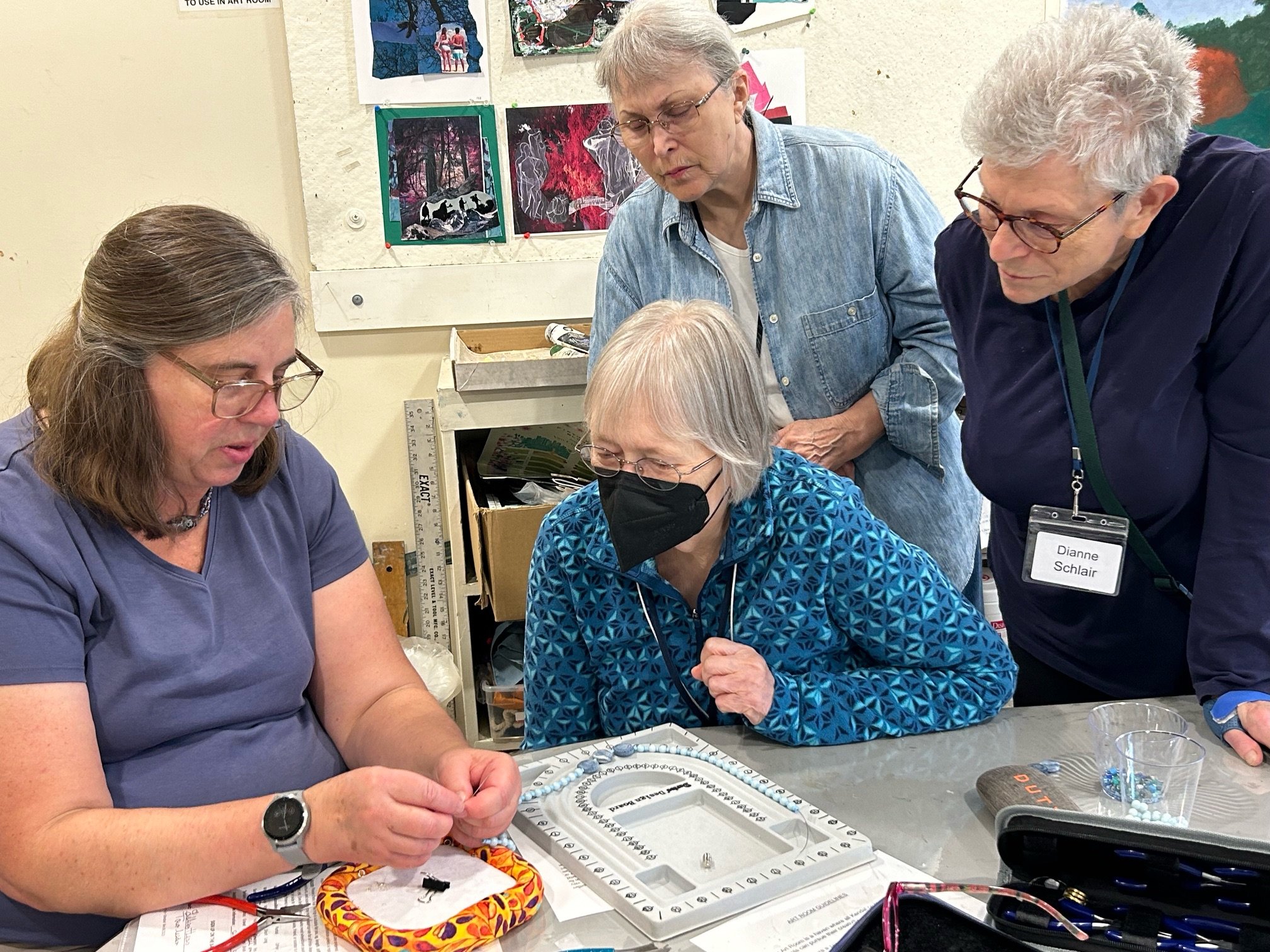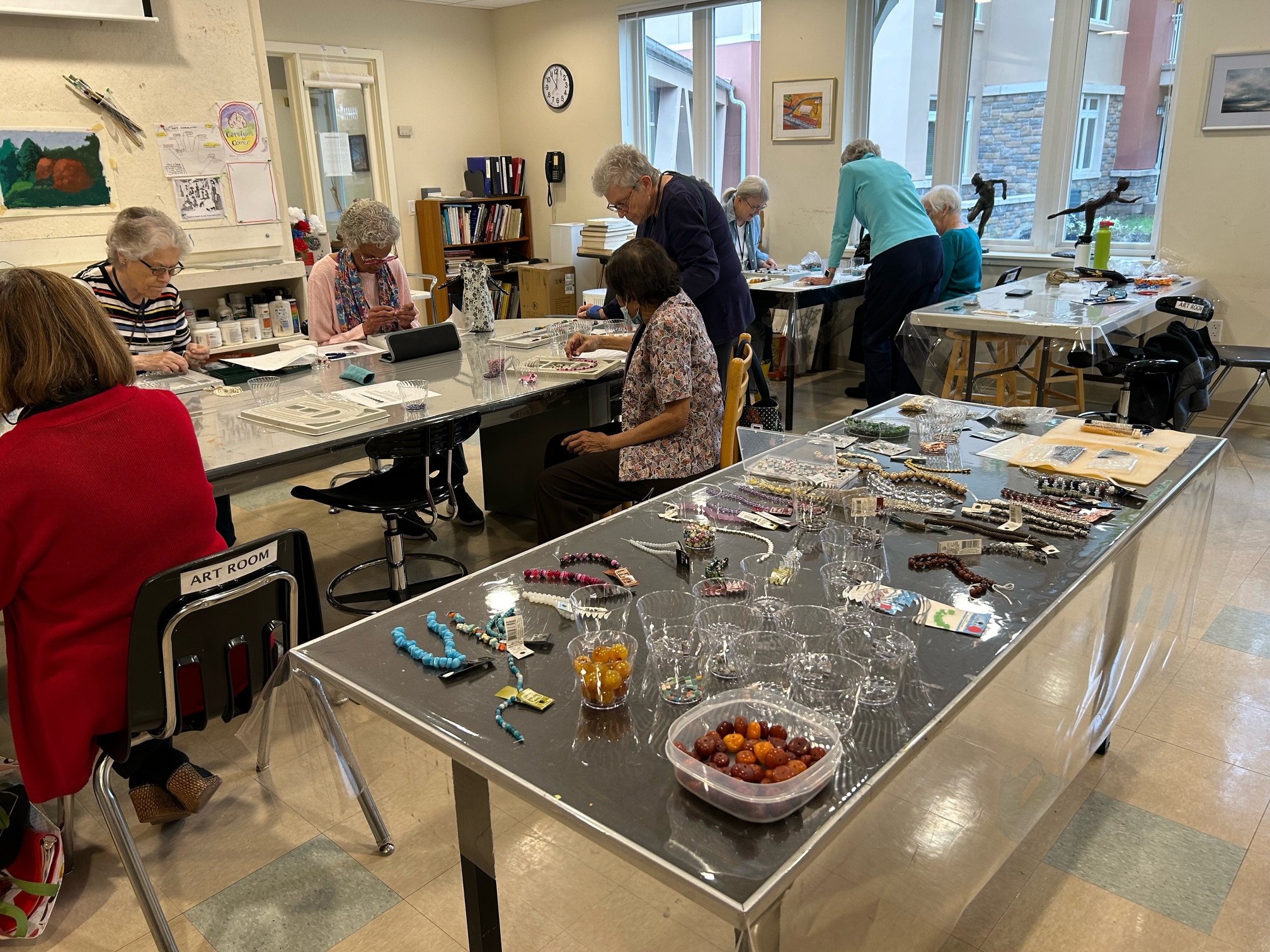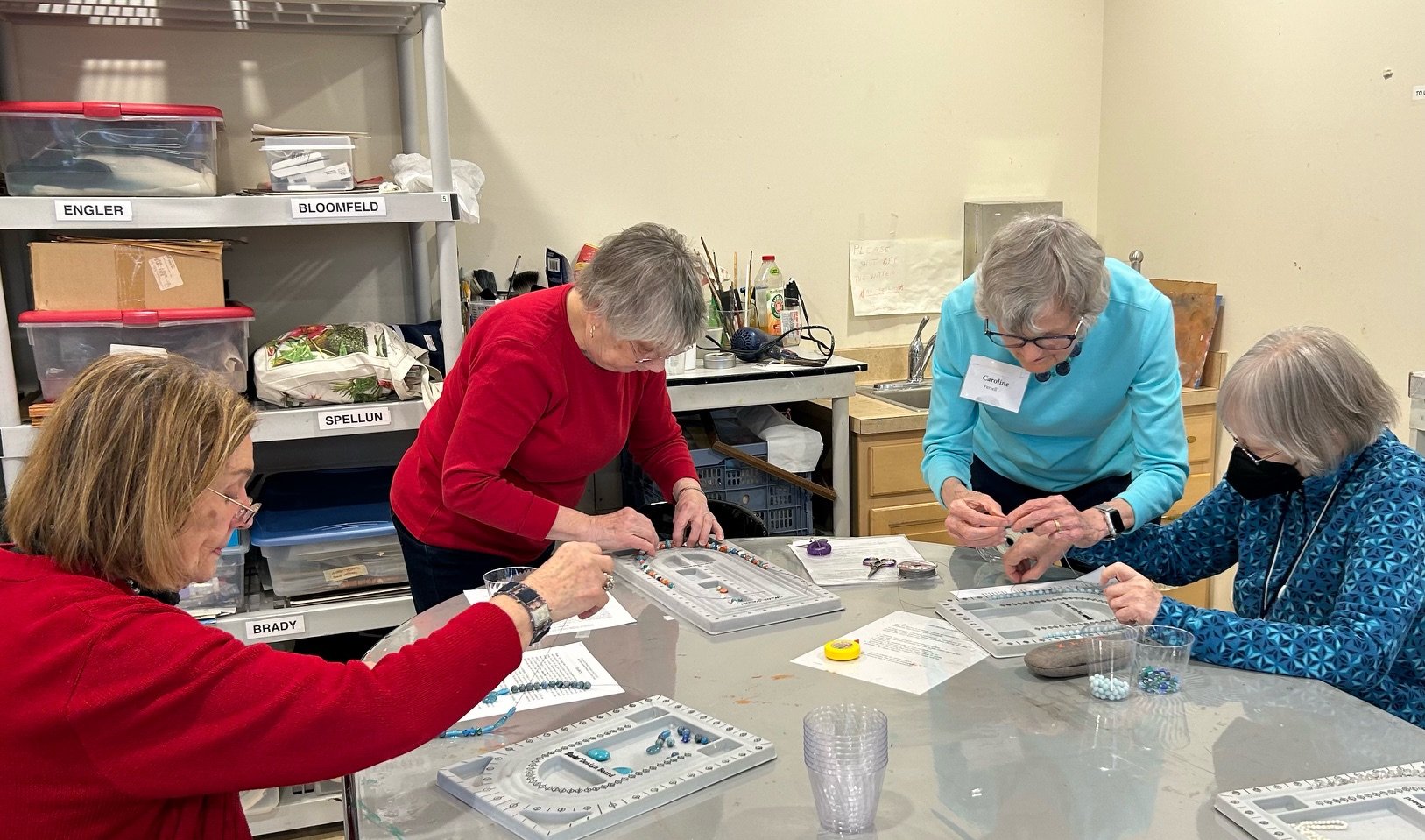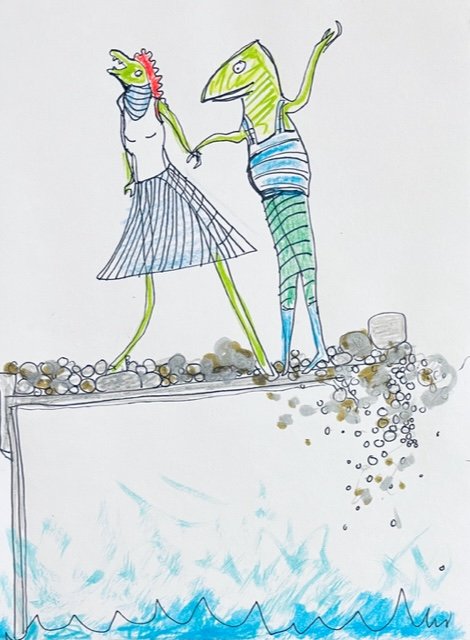November 27: National Bavarian Cream Pie Day
Each year, National Bavarian Cream Pie Day recognizes a pie that makes a grand entrance. Enough with the pumpkin and mincemeat! They’re so last Thanksgiving.
Cream pies are filled with custard or pudding that is made from milk, cream, flour, and eggs, and they usually are topped with whipped cream. Bavarian cream — also known as bavaroise or bavarois — is used for a specific type of cream pie. Bavarian cream is made from milk thickened with eggs and gelatin, and folded — or combined to make a smooth mixture — with whipped cream. Before the advent of refrigeration, Bavarian cream represented a culinary triumph. To set the dish, the Bavarian cream would have had to be chilled in an ice-filled bowl.
The concept and creation of the cream itself are said to have been around since the 17th century when French chefs cooked for the House of Wittelsbach — a German royal family that ruled Bavaria from the 12th century until 1918. In the early 19th century, Chef Marie-Antione Carême, an early practitioner of grande cuisine or haute cuisine who established many of the French cooking techniques still used today, often made Bavarian cream and is sometimes credited with the invention of the Bavarian Cream Pie. It’s also possible that he didn’t create it but “merely” perfected it. Either way, initially it began to appear in gourmet restaurants and luxury hotels served Bavarian cream pie in France.
True Bavarian creams first appeared in the US in Boston Cooking School cookbooks in 1884, and in The Fannie Farmer Cookbook in 1896.
It is fitting that today would celebrate a cream pie, as those are the type of pies usually used for pieing — throwing a pie in someone’s face — and today just so happens to also be Pie in the Face Day. Do with that what you will . . .
November 28: Red Planet Day
Okay, boys and girls, this is a long one. So, if you have no interest in amazing history of exploration into space, speed scroll on down to November 29, Square Dancing Day . . .
Red Planet Day commemorates the launch of the Mariner 4 spacecraft. It is a day to both celebrate the planet Mars and learn more about it. Now, you may think that we know everything about everything, and that is understandable. But for this, we turn to the National Aeronauts and Space Administration to tell the story:
“Mariner 4, a robotic interplanetary probe, was launched by NASA and the Jet Propulsion Laboratory (JPL) on November 28, 1964. It was the fourth of a series of spacecraft designed to fly past planets, and it became the first to fly past Mars. It provided the first close-up photos of the planet, and the first ever from-space images of another planet. Besides taking photos, the spacecraft’s objectives were also to take field and particle measurements in interplanetary space near the planet and to provide researchers with information about long interplanetary flights.
Mariner 4 had an octagonal magnesium frame, 45.7 centimeters in height and 127 centimeters across. Equipped with antennas and other instruments, the spacecraft’s overall height was 289 centimeters, and from end to end was 688 centimeters. It was powered by four solar panels on its top, and it could also draw from a rechargeable battery. Hydrazine, a monopropellant, was used for propulsion, fueling a motor installed on one of the spacecraft’s sides. A television camera was mounted at Mariner 4’s bottom center, and the spacecraft was equipped with scientific instruments such as a magnetometer, solar plasma probe, cosmic ray telescope, dust detector, trapped radiation detector, and ionization chamber/Geiger counter.
When it launched, the spacecraft jettisoned a protective shroud covering, and then separated from an Atlas D booster. Mariner 4 was still joined to an Agena D rocket at the time. The rocket’s first burn put the spacecraft into Earth’s parking orbit, and its second burn put it into Mars’ transfer orbit. It then separated from the Agena D and entered cruise mode. The solar panels were soon deployed, taking in the sun.
On July 14, 1965, after 228 days, Mariner 4 flew past Mars. At 00:18:36 Universal Time (UT) on July 15 (7:18:49 pm Eastern Standard Time [EST] July 14), it began taking pictures of the planet, capturing 21 pictures as well as 21 lines of a 22nd picture. The images were transferred to Earth twice. They showed a crater-filled, moon-like area, which later was found to be non-traditional compared to other parts of the planet. The spacecraft reached its closest point to Mars at 01:00:57 UT on July 15 (8:00:57 p.m. EST July 14), at 6,118 miles from the planet. During the next few years, Mariner 4 continued to transfer data to Earth. Communications with the spacecraft were terminated on December 21, 1967. The total data returned from the mission was 5.2 million bits, and all experiments were successful except the ionization chamber/Geiger counter and the plasma probe. The total cost of the mission was estimated to be about $83.2 million.”
Now, wasn’t that fascinating?! We thought so, too. Back to the more, uhm, pedestrian wisdom:
Mars is known as the “Red Planet” because it appears to be red on account of the iron-rich minerals on its surface that have rusted into iron oxide. Mars’ name comes from Ares, the Greek god of war. Mars is the corresponding Roman god. It is the 7th-largest planet in the solar system, with about 1/10 the mass of Earth, which is the 5th-largest planet. But, it has a similar landmass as Earth, since Earth is about 70% water.
Mars can often be seen from Earth with the naked eye. It is the 4th planet from the Sun, averaging a distance of 136,764,000 miles from it, and it takes Mars 687 days to orbit around it, which means the planet’s seasons are almost twice as long as Earth’s. It makes its orbit in an oval-shaped pattern, which causes its weather to be more extreme than Earth’s. Still, the tilt of its axis is about 25 degrees, similar to the tilt of the Earth, so its seasons are similar to Earth’s. The average temperature of Mars is -80°F, and its temperature ranges from -207°F to +81°F — much colder than Earth’s. It also has about 1/3 the gravity of Earth.
About 95% of Mars’ atmosphere is carbon dioxide. Its atmosphere is thin with low atmospheric pressure, about 1% of that which is found at sea level on Earth. Despite this, Mars still does have weather, clouds, and wind. It has huge dust storms, the largest of any in the solar system. Mars also experiences fog and frost. Like Earth, Mars has polar ice caps, the only other planet to have them. Although the ice caps hold water, and Mars also has water vapor, water cannot exist on the planet’s surface because of the low atmospheric pressure and cold temperatures. Although, there may be some water about a meter below the planet's surface.
Extraterrestrials from Mars are known as Martians and are common in science fiction stories. For much of the 19th century, humans believed there was life on Mars, which fueled the stories. This belief was largely based on the observance of straight lines on the planet’s surface. When stronger telescopes came about in the 20th century, it showed the lines were an optical illusion and helped debunk the belief in Martians. Still, since Mars is somewhat similar to Earth, many scientists believe that it may have once sustained life.
Exploration of the Red Planet dates to 1960 when the Soviet Union launched Marsnik 1. Mariner 4 spacecraft was the first of several exploratory missions that have gone to Mars to gather data about the planet. It was followed by Mariner 6 and Mariner 7 in 1969, and Mariner 9 in 1971. In the 1970s, the Viking missions conducted experiments on Mars’ soil, looking for microorganisms. The lander from Viking I touched down on Mars in 1976, the first successful landing on Mars, and the first close-up pictures of Mars were taken by it.
The next successful landings on Mars took place with the 1996 launch of Mars Pathfinder, a lander, and Mars Global Surveyor, an orbiter. Mars Pathfinder carried a small-wheeled rover named Sojourner, the first of its kind to explore the surface of another planet. Launched in 2001, the Mars Odyssey orbiter found water under the planet’s surface. The Spirit and Opportunity rovers were launched by NASA in 2003, and the Phoenix lander searched for and found water in 2008. In 2011, the Mars Curiosity rover was sent to Mars to investigate its rocks. It found a meteorite on the planet for the first time, as well as complex molecules and seasonal fluctuations of methane concentrations in the atmosphere. In 2018, Mars InSight, a lander, made it to the planets’ surface, with the aim of exploring geologic activity.
As of 2019, besides the Mars Odyssey, two other NASA orbiters are orbiting Mars: Mars Reconnaissance Orbiter and MAVEN (Mars Atmosphere and Volatile Evolution). The European Space Agency (ESA) also has two Mars orbiters in space: Mars Express and Trace Gas Orbiter. In addition, India has an orbiter in space as well: Mars Orbiter Mission. The Mars Curiosity and Opportunity rovers are both on the planet’s surface, and send data back to astronomers on Earth. NASA has estimated they will be able to send humans to Mars by the 2030s. The space programs of many other countries focus on Mars, and both China and Russia have plans to send humans to the planet. Private citizens have formed companies that also have the goal of sending humans to Mars. For example, SpaceX, founded by Elon Musk, also is formulating plans to bring humans to Mars. Although it is unknown when humans will land on Mars, one thing is certain, interest in the exploration of the planet will continue.
Thus far, no Martians have deigned to appear.
November 29: Square Dancing Day
National Square Dancing Day celebrates the square dance form of folk dancing, a fun, healthy, and simple form of dance with a long history. It involves 8 people in total, making up 4 different couples. Each couple is arranged into a square, with 1 couple at each side, facing the middle of the square.
Square dancing started in England in the 17th century. Its creation was influenced by a few European dances. One was the Morris dance. In England ‘round about 1600, 6 teams of trained male dancers began performing this choreographed dance, inspiring the creation of English country dance, where couples line up and weave, circle, and swing, reminiscent of square dancing. Later, the quadrille and cotillion dances, practiced in squares by couples in France in the 18th century, also influenced square dancing. Add to that mix, folk dances from Scotland, Scandinavia, and Spain.
Square dancing was among the folk and popular dance were brought to the American colonies by Europeans. Square dancing was brought by settlers from England, Ireland, and Scotland. Following the American Revolution, British influences were largely avoided, and French dancing styles were particularly popular in the new US. Various words still used in square dancing come from France: promenade, allemande, and do-si-do, the last a corruption of the word dos-à-dos, which means “back-to-back.”
African American and Native American dance forms also influenced square dancing in America . In the 19th century, slaves were often used as the “callers,” who helped participants stay in step. Callers control the dance by calling out new sets of moves. Slave callers often brought their own steps and songs to the dance, while slave musicians often performed and sometimes wrote the music that was danced to. Some African Americans adopted these square dances for their own.
Square dancing was popular in America in the 19th century, especially in its latter decades, and particularly in Appalachia. It fell out of favor when polkas and waltzes came in late in that century. In the early decades of the 20th century, jazz and swing music swept the country, further eroding square dancing’s popularity.
Still, square dancing did not completely vanish. In 1920, Henry Ford, who thought that the dance helped foster genteel manners, hired dancer Benjamin Lovett to develop a national program devoted to square dancing. Ford opened ballrooms and required his workers to attend classes. He also produced instructive radio broadcasts, designed to be listened to in schools across the country. In the 1930s, Lloyd Shaw, a folk-dance teacher, wrote books about square dancing and held seminars for square dance callers.
Square dancing surged again in the decade following World War II, when it separated into 2 North American types: modern western square dance and traditional square dance. Modern western square dance formed in the western US and is associated with the country-western and cowboy lifestyle. Other unregulated regional varieties of square dancing are known collectively as “traditional,” and are still practiced in some parts of the US. In general, these are seen as originating in the Appalachian and New England regions. Traditional square dance is also known as “old time square dance.”
Most square dances call for 4 pairs of dancers, but there are other variations. Ninepins square dancing has an extra person in the center of the square, Winter Solstice has an extra couple in the center, Hexitation has additional couples in the head positions, and Twelve Reel has an extra lady on each side of the square. Hexagon dancing, for experienced dancers, has 6 couples arranged in a hexagon position. Bigon, the most advanced type of square dancing, has 4 dancers in the shape of a square. Different variations of the dance have the switching of partners, changes in music tempo or genre of music during the middle of a song, and the use of “gimmick” moves.
Although modern western square dance and traditional square dance are the most popular types of square dancing in the US, there are other types throughout the world. Folk dance or barn dance is the traditional English dance that started in the seventeenth century that has influenced more modern folk dances in England. Playford is a traditional square dance from England that was taught by John Playford, a famous music theory publisher. Cèilidh is a folk square dance that is livelier and has more stepping that other English square dances, and is common in Scotland, Ireland, and England. There also is the Céilí dance from Ireland, Irish set dance, and Scottish country dance.
November 30: National Mason Jar Day
National Mason Jar Day celebrates the jar used for canning and countless other purposes. While they are generically called “canning jars,” most people refer to them as “Mason jars.”
On November 30, 1858, John Landis Mason received U.S. Patent # 22186 for the Mason jar and revolutionized the world of food safety and storage. In ancient history, humans hunted and foraged for food. Whatever was available had to be consumed either right away or shortly after. Only a few vegetables and fruits could be saved for longer than a few days. Even then, those fruits and vegetables had a very short storage life of a few weeks to maybe a few months. Eventually, ways were discovered to preserve some foods. This included drying and salting meats and drying fruits and vegetables, significantly extending the shelf life of many foods. But the price was paid for in taste and texture.
Then came the Mason jar. Prior its invention, and even afterwards to some extent, glass jars were often sealed with wax — a sealant that proved faulty many a time. The Mason jar was an improvement because of the airtight function of its screw-on-lid. These lids consist of a metal band or ring, which holds down a tin-plated steel disc. A rubber gasket also helps with the sealing process. After jars are filled, they are sterilized in boiling water or by steam, and as they cool, a vacuum is created, sealing the jar. The Mason jar’s helped revolutionize home canning.
Mason’s patent expired after 20 years, and many other companies began producing the jars. The Ball brothers, Hero Fruit Jar Company, and Consolidated Fruit Jar Company got into the act, but the Ball jar ended up being the most popular brand in the US. Between 1910 and 1915, “bead” jars were introduced. These jars had a “bead” ledge below the lid’s threads, which made the sealing of the jars even tighter and more effective. About this time Ball introduced the Ball Perfect Mason jar, which had the bead design, and became one of the most popular Mason jars of the 20th century. Jarden Home Brands now makes Ball jars, as well as another popular Mason jar brand, Kerr. Another popular brand of Mason jars is Golden Harvest.
In 1875, Charles de Quillfeldt invented a new wire-bail closure for jars, which became known as a lightning closure. The jars quickly became known as lightning jars. Henry Putnam improved on Quillfeldt’s design in 1882 with a patent. These represent a whole other way of sealing Mason jars besides the screw-on-lid method. Although there is no longer a Mason jar brand, the name Mason jar is used generically to describe all types of jars that carry a design similar to the original.
The most important use of the Mason jar has been in the canning and preservation of food. Food storage and food safety have always been an essential issue. Almost every food and vegetable has been pickled or, in the case of jams and salsas, preserved. Mason jars have been particularly useful for this function in areas with short growing seasons and the need for food during the winter.
Mason jars were supplanted commercially by tin cans and plastic. They also took a hit as the interest in home canning tapered off after World War II. More people moved to cities, refrigeration improved, and transporting vegetables became easier. Then, in the 1960s and 1970s, because of the back-to-the-land movement — a reaction to the post-war consumerist culture — there was a revival in canning. And today there is once again a growth in awareness of the economic and environmental costs of the cross-country transportation of foods. Locally grown foods have become a focus. Canning has been an extension of that, and, along with it, an increased interest in Mason jars.
Jarden Home Brands now makes Ball jars, as well as another popular Mason jar brand, Kerr. Another popular brand of Mason jars is Golden Harvest.
Today there are many other uses for Mason jars. They can be used as vases for flowers or to hold any number of other things — from buttons to coins to, well, whatever fits inside — as well as drinking glasses. They also have become collector’s items. In some areas, they have become trendy, and are now found holding fancy cocktails at upscale bars. Even 7-Eleven offers its Slurpees in Mason jars.
December 1: World Antarctica Day
World Antarctica Day — created by the Foundation for the Good Governance of International Spaces (Our Spaces) — celebrates the anniversary of the signing of the Antarctic Treaty in 1959 and the setting aside of nearly 10% of the Earth “forever to be used exclusively for peaceful purposes . . . in the interests of all mankind.”
It’s also a day to learn more about this cold and barren continent. Antarctica, the 5th largest continent, at about 5.5 million square miles, is twice as big as Australia. Ninety percent of the planet’s ice is on Antarctica.
Among other provisions, the Antarctic Treaty froze, so to speak, territorial claims to the continent, banned nuclear weapons and waste on the continent, and preserved the entire region south of 60 degrees south latitude for peaceful purposes. The banning of activities of a military nature makes it effectively the first nuclear-arms control agreement in history. The Treaty went into effect with 12 signatories: Argentina, Australia, Belgium, France, Chile, Japan, New Zealand, Norway, South Africa, Soviet Union, United Kingdom, and United States
Each of these countries had scientists working on the continent during the International Geophysical Year of 1957-1958. This Treaty became the first arms control agreement established during the Cold War. It symbolized global understanding during a period of intense division and secrecy. Today, more than 50 nations recognize the Treaty.
As stewards of the US Antarctic Program, the US National Science Foundation provides oversight of science in the region, including logistical and programmatic support to thousands of scientists who travel to the continent each year to conduct research in fields ranging from climate change and astronomy to weather and paleontology.
“Antarctica is ground zero for understanding global change effects on society”, said Roberta Marinelli, the Director of NSF’s Office of Polar Programs. “The continent, ice sheets, and oceans play a crucial role in the distribution of heat over our planet, and the extent of sea level rise. They also show how earth system processes affect living marine resources that humans depend on.”
USAP operates 3 year-round research stations and 2 research vessels, coordinates all US science conducted on the continent, and works with other federal agencies, the US military, and civilian contractors to provide the logistical support for research. Additionally, USAP works in collaboration with other international Antarctic programs, supporting global research and initiatives.
The research conducted has three goals:
To understand the region and its ecosystems.
To understand its effects on and responses to global processes such as climate.
To use the region as a platform to study the upper atmosphere and space.
It is the foundation upon which decades of scientific achievements and advancements rest.
Humans didn’t discover Antarctica until 1820. Once discovered, several nations sought to claim the continent as their own. As tension increased, some countries began working on a peaceful solution. The Antarctic Treaty ensured that all exploration and research on the continent would be for peaceful purposes only. The Treaty also promoted the idea of cooperation between countries and that all scientific observations would be made freely available. Additionally, the continent could never be used for military purposes or radioactive waste disposal.
In recent years, climate change and tourism have become important issues for the Antarctic region. Antarctica has an average temperature in the summer of -18° F. The average temperature in the winter is -76° F. Despite these frigid temperatures, tourism on the continent is growing. In one year, 40,000 people visited.
December 2: National Fritters Day
Get ‘em while they’re hot! National Fritters Day allows for no fritterin’ away of the time. Fire up your fryers. Fritters are easy to cook and exist in different forms in cuisines worldwide. They can be sweet or savory. They can be an appetizer, dessert, or entrée.
The first historical record of the fritter dates back to 1665, but probably existed much further back than that. Many food historians (yes, they exist) believe Ancient Romans first consumed fritters. They then introduced them to Europe.
The name “fritter” is derived from the Latin word frictura, which means “a fry.” That word was derived from “frigere,” which means “to fry.” In general, a fritter has a batter or breading, and usually has fillings such as meat, seafood, vegetables, or fruit, although fillings are not absolutely necessary for it to be considered a fritter.
Fritters come in various forms, from morsels dipped in flavorful batters to bits of dough stuffed or filled with delicious surprises. All varieties are deep-fried and served hot with dips, drips, or dustings of seasonings, sweets, or sauces. Cultures all over the world make some kind of fritter. Most commonly filled with fruit or cheese, fritters can also be filled with savory meats, seafood, and vegetables.
But back to the first recorded mention of the fritter: In 1665, the famous diarist Samuel Pepys, a British Member of Parliament during the Restoration period in England, wrote in one of his entries that he would be enjoying some fritters before Lent. Lucky Pepys.
Fritters are used in many cuisines. The French beignets, Italian bignè, and Greek loukoumades are all are examples of fritter varieties specific to different countries. The custom of coating food in batter and frying it was introduced to Japan by the Portuguese and Spanish in the late 16th century. From this, tempura — deep-fried shellfish, fish, and vegetables — was incorporated into traditional Japanese cuisine. Similarly, the Indian pakora is a savory deep-fried cake containing meat or vegetables such as cauliflower and eggplant. Fritto misto is an Italian fritter-like dish of several types of food, usually seafood, dipped in batter and fried in olive oil. Another specialty is the flower fritter, which is basically deep-fried edible flowers like acacia, elderflower, and squash blossoms.
Fritters are easy and cost-effective to make so it comes as no surprise that there is a version in every culture. You can find fritters at restaurants, county fairs, and even on the street. The most famous fritters you can find in the US are corn fritters. In the South, traditional corn fritters are made of melted butter, milk, flour, egg, and corn kernels. They can be baked, shallow fried, and deep-fried, and are served with cream, honey, fruit, or jam. You can add virtually any fruit or vegetable in these delicious fritters, making them a very versatile dish.
Crab cakes and zucchini fritters are also common in the US, and hushpuppies are often considered to be fritters. Even presidents have enjoyed fritters; Grover Cleveland served a parsnip variety at the White House on Thanksgiving.
December 3: Let’s Hug Day
Let’s Hug Day celebrates the warmth and comfort of a hug. Hugs are very versatile. Many of us hug when we wish to share our happiness with family and friends. At the same time, hugs are a staple when we are feeling low and need someone to just hold and console us. Hugs are also the perfect reconciliatory gesture when you want to make up with someone after a fight.
Scientifically, hugs are known to release good hormones that can help lower your blood pressure and stress levels. Researchers recognize that hugging has benefits for both hugger and huggee. Hugging reduces stress levels, boosts self-esteem, improves relationships, improves heart health, and can even reduce pain. Hugging also reduces anxiety, improves mood and memory, and increases bonding and closeness. Those who hug often tend to have increased empathy for others. In order for hugs to be beneficial, those participating must trust each other and both want to hug. Otherwise, the opposite effect happens, and cortisol levels rise, causing stress. This shows how it is favorable to preface a hug with the words “Let’s hug.”
The word “hug” is thought to come from the Old Norse word “hugga,” which means “to comfort.” Other scholars speculate that the word may have originated from the German word “hegen” that roughly translates to “cherish” or “foster.” In the English language, “hug” is said to have been first used somewhere in the 16th century.
While the etymology and history of the word may differ, the emotion behind it has more or less stayed the same since the inception of the act. Babies, who know nothing about the outside world, reach out to their mothers and fathers for a dose of love and comfort. In fact, if babies do not receive regular cuddles and hugs from their parents, their relationship tends to take a beating.
The act of hugging has been around for millennia and is practiced by almost all cultures as a way to connect with others without using language. Indeed, Let’s Hug Day isn’t the only holiday dedicated to hugging. There is also National Hugging Day and Hug Holiday, too. A hug is just that important.



















































































